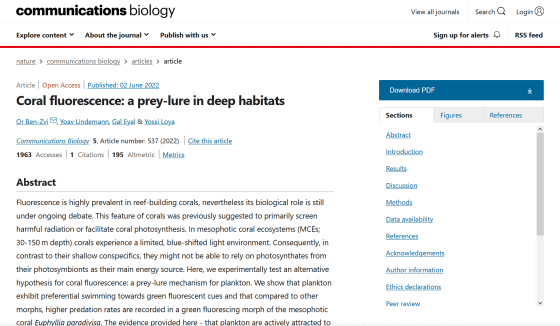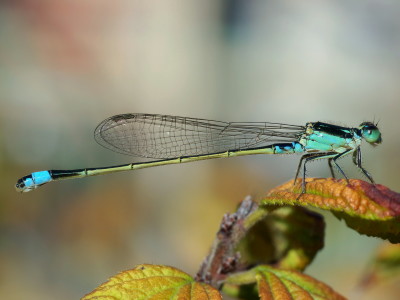What is the reason why corals that live in the sea where light does not reach shine?

Speaking of corals, there is an image of densely forming coral reefs in shallow tropical seas, but there are also types of corals that live in deep places. It is also known that there are species that emit fluorescent colors in such corals, and an Israeli research team has announced research results that approach the mystery of ``Why do corals that live in places where light does not reach much shine?'' did.
Coral fluorescence: a prey-lure in deep habitats | Communications Biology

A scientific mystery solved: Why corals glow | EurekAlert!
https://www.eurekalert.org/news-releases/959057
Scientists Have Finally Discovered Why Deep-Sea Corals Glow in The Dark : ScienceAlert
https://www.sciencealert.com/scientists-have-finally-discovered-why-some-corals-glow-in-the-dark
At first glance, corals look like plants, but they are actually animals that belong to the same phylum Cnidaria as jellyfish. Species that live in shallow water live symbiotically with algae called zooxanthellae , and take in nutrients produced by photosynthesis by zooxanthellae. Some live at depths as deep as 6000m.
Many of these corals emit light, and there are several theories as to why they emit light, such as `` to attract zooxanthellae, which are necessary for growth, '' and `` to protect against light damage and heat stress .'' is chanted.
However, the photosynthetic energy of zooxanthellae is not so important for corals that live in mid-deep waters where light is scarce, and they are less susceptible to light damage. Therefore, a joint research team consisting of Israel's Tel Aviv University, the Steinhardt Museum of Natural History, and the Inter-University Research Institute of Marine Science studied coral species that live in deep water with little light and rely on predation rather than photosynthesis of brown algae as an energy source. I turned my attention to it, and conducted research based on the hypothesis that ``corals lure plankton and small animals, which are prey to corals, with light.''

First, the research team investigated whether these species are attracted to fluorescent colors in experiments using
Subsequently, the research team conducted a similar experiment using the native species Anisomysis Marisrubri in a 40-meter-deep environment where corals grow naturally in the Gulf of Eilat (Gulf of Aqaba) , Israel, and confirmed fluorescence that is also attracted to fluorescent colors. did. On the other hand, fish that do not feed on coral were not attracted to fluorescent colors, but rather tended to avoid fluorescent colors, mainly orange.
After that, the research team used a coral called Euphyllia paradivisa collected at a depth of 45 m in Eilat Bay to investigate how fluorescent colors affect the predation rate of Artemia salina. Experiments under blue light that excites the fluorescent color of corals revealed that corals that emit green fluorescence have a higher predation rate than corals that emit yellow fluorescence. On the other hand, when the experiment was conducted under red light that does not excite the coral fluorescence color, there was no difference in the predation rate.

'This study provides experimental proof that coral fluorescence plays a role in attracting prey,' said Or Ben-Zvi, a coral reef researcher at Tel Aviv University who led the study. The hypothesis, dubbed the 'light trapping hypothesis', may apply to other fluorescent organisms in the ocean, and the phenomenon may play a larger role in marine ecosystems than previously thought. It suggests sexuality,' he said.
``Many corals show a fluorescence pattern that emphasizes the tips of their mouths and tentacles,'' said Yossi Loya, a marine ecologist at Tel Aviv University. They argue that the ability of corals to attract prey is particularly important for deepwater corals that require energy sources other than photosynthesis.
Science Alert, a scientific media, said, ``It is important to note that this study only targets one type of coral that lives in the middle and deep waters. Further research is needed, as we need to know whether people perceive color in humans, and it may differ depending on the species, habitat, and life stage of the coral.”
Related Posts:







